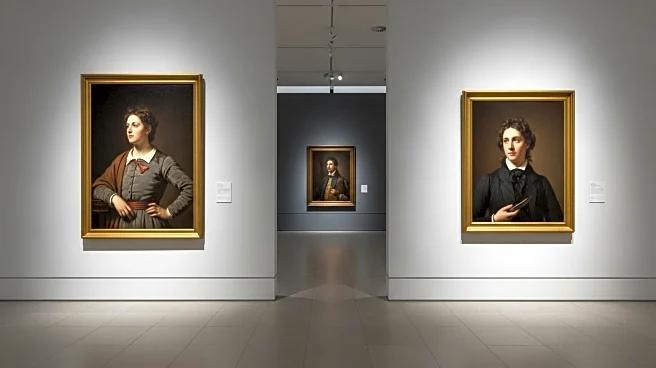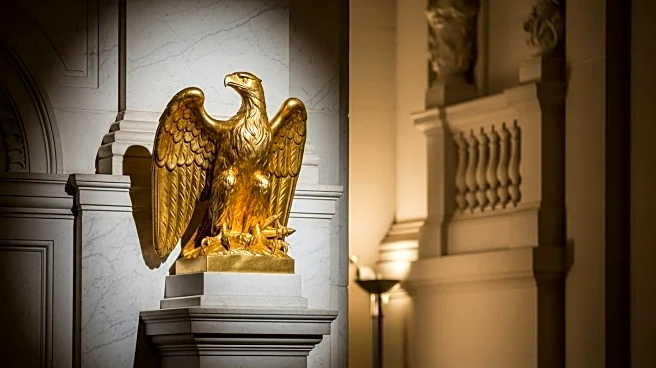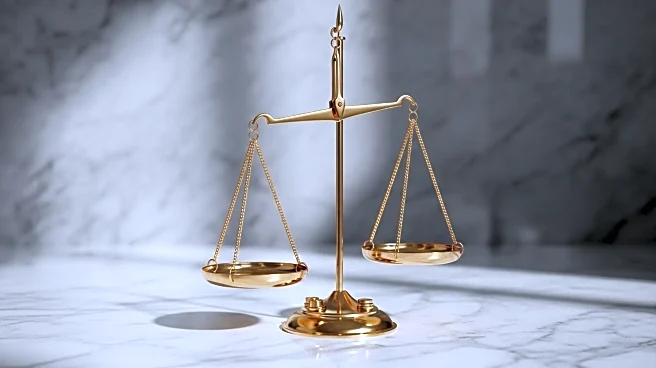What is the story about?
What's Happening?
The Department of Homeland Security (DHS) has recently come under scrutiny for posting an image of the 1872 painting 'American Progress' by John Gast on its social media platforms. This artwork, which allegorizes Manifest Destiny, depicts Native Americans being forced out of the picture, symbolizing westward expansion. The posting has sparked controversy, with the Thomas Kinkade Foundation considering legal action over the unauthorized use of the artist's work. Stephen Aron, director of the Autry Museum of the American West, commented that the painting represents a 19th-century white American perspective rather than an accurate historical account. The New York Times has explored the implications of DHS's choice to share this image, raising questions about its intended message and historical accuracy.
Why It's Important?
The controversy surrounding DHS's use of 'American Progress' highlights ongoing debates about historical representation and the narratives promoted by government institutions. The painting's depiction of Manifest Destiny and the forced displacement of Native Americans is a sensitive topic, reflecting broader issues of cultural and historical interpretation. This incident underscores the importance of critically examining the imagery and messages disseminated by public agencies, especially in the context of American history and identity. The potential legal action by the Thomas Kinkade Foundation also raises questions about intellectual property rights and the ethical use of art in public communications.
What's Next?
The Department of Homeland Security may face increased scrutiny and pressure to clarify its intentions behind the use of 'American Progress.' Legal proceedings could ensue if the Thomas Kinkade Foundation pursues action over the unauthorized use of the artwork. Additionally, this incident may prompt broader discussions about the role of art in public discourse and the responsibilities of government agencies in representing historical narratives. Stakeholders, including historians, cultural institutions, and advocacy groups, may engage in dialogue to address the implications of such representations and advocate for more accurate and inclusive portrayals of American history.
Beyond the Headlines
The use of 'American Progress' by DHS touches on deeper cultural and ethical dimensions, including the portrayal of Native American history and the legacy of Manifest Destiny. This incident may contribute to ongoing efforts to reassess and reinterpret historical narratives in educational and public contexts. It also highlights the power of art as a tool for shaping public perception and the need for careful consideration of its use by government entities. The broader cultural impact of this controversy could influence future policies regarding the representation of historical events and figures in official communications.
AI Generated Content
Do you find this article useful?
















